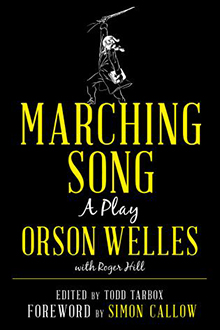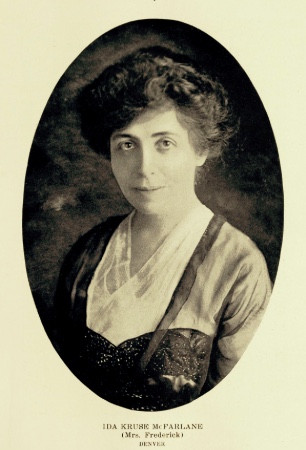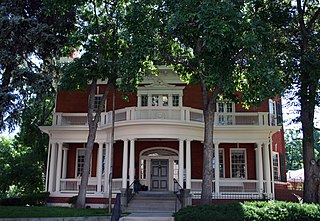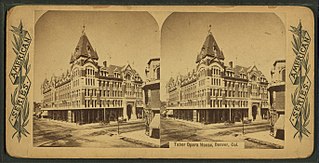
Leadville is a statutory city that is the county seat, the most populous community, and the only incorporated municipality in Lake County, Colorado, United States. The city population was 2,633 at the 2020 census. It is situated at an elevation of 10,158 feet (3,096 m). Leadville is the third highest incorporated city in the United States behind Alma and Montezuma and is surrounded by two of the tallest peaks in the state.

Central, commonly known as Central City, is a home rule municipality located in Gilpin and Clear Creek counties, Colorado, United States. Central City is the county seat and the most populous municipality of Gilpin County. The city population was 779, all in Gilpin County, at the 2020 United States census. The city is a historic mining settlement founded in 1859 during the Pike's Peak Gold Rush and came to be known as the "Richest Square Mile on Earth". Central City and the adjacent city of Black Hawk form the federally designated Central City/Black Hawk Historic District. The city is now a part of the Denver–Aurora–Lakewood, CO Metropolitan Statistical Area and the Front Range Urban Corridor.

Gilpin County is a county located in the U.S. state of Colorado, smallest in land area behind only the City and County of Broomfield. As of the 2020 census, the population was 5,808. The county seat is Central City. The county was formed in 1861, while Colorado was still a territory, and was named after Colonel William Gilpin, the first territorial governor.

Black Hawk is a home rule municipality located in Gilpin County, Colorado, United States. The city population was 127 at the 2020 United States Census, making Black Hawk the least populous city in Colorado. The tiny city is a historic mining settlement founded in 1859 during the Pike's Peak Gold Rush. Black Hawk is now a part of the Denver-Aurora-Lakewood, CO Metropolitan Statistical Area and the Front Range Urban Corridor.

In American theater, summer stock theater is a theater that presents stage productions only in the summer. The name combines the season with the tradition of staging shows by a resident company, reusing stock scenery and costumes. Summer stock theaters frequently take advantage of seasonal weather by having their productions outdoors, under tents set up temporarily for their use, or in barns.

The Colorado Springs Fine Arts Center at Colorado College (FAC) is an arts center located just north of downtown Colorado Springs, Colorado. Located on the same city block are the American Numismatic Association and part of the campus of Colorado College.

John Sewell "Jack" Langrishe, popularly known as the "Comedian of the Frontier", was an Irish-American actor and impresario who travelled extensively throughout the American West and later in life became one of the first State Senators of Idaho.

The Central City/Black Hawk Historic District is a National Historic Landmark District that encompasses the developed areas of Central City and Black Hawk, Colorado, United States. They are adjacent former gold mining camps in the Front Range of the Rocky Mountains in Gilpin County, Colorado. For a time, the area was known as the Richest Square Mile on Earth, and was the largest urban area of the Colorado Territory in the 1870s.

Victoria Vola was an American actress. She was best known for her portrayal of Edith Miller on both the radio and television runs of Mr. District Attorney.

Elizabeth McCourt Tabor, better known as Baby Doe, was the second wife of Colorado pioneer businessman Horace Tabor. Her rags-to-riches and back to rags again story made her a well-known figure in her own day, and inspired an opera and a Hollywood movie based on her life.
Edward Divine White Jr., FAIA, was an architect based in Denver, Colorado, whose forty-year practice focused on contemporary architecture and historic preservation. Along with his architectural practice, White was lifelong friend to Jack Kerouac from 1947 to Kerouac's death in 1969. The pair exchanged over 90 letters and postcards during that time.

William Ellsworth Fisher was an architect who founded the Denver, Colorado firm that became Fisher & Fisher.

Anne Evans was an American arts patron. She devoted her life to the founding and support of some of Colorado's largest cultural institutions, including the Denver Art Museum, the Central City Opera, and the Denver Public Library. She had decades of experience in leadership positions, particularly in the field of art. She was also a leader of a conservation effort and a fundraiser during World War I.

Marching Song is a play about the legend of abolitionist John Brown, written in 1932 by Orson Welles and Roger Hill. It is most notable for its narrative device of a journalist piecing together a man's life through multiple, contradictory recollections—a framework that Welles would famously employ in his 1941 film, Citizen Kane. Although the play has never been professionally performed, an abridged version of Marching Song was presented in June 1950 at the Woodstock Opera House in Woodstock, Illinois, a world-premiere benefit production by the Todd School for Boys. Rowman & Littlefield will publish the play in August 2019.

Caroline Bancroft (1900–1985) was a journalist and performed in the Ziegfeld Follies. She is known for the books and booklets that she wrote about Colorado's history and its pioneers. In 1990, she was inducted into the Colorado Women's Hall of Fame.

Bonfils Memorial Theatre, also known as Lowenstein Theatre, was a community theatre in the Capitol Hill neighborhood of Denver, Colorado, which operated from 1953 to 1986. Built by Denver philanthropist Helen Bonfils in memory of her parents, Frederick Gilmer Bonfils and Belle Barton Bonfils, it staged plays, operas, concerts, films, lectures, and television shows, presenting more than 400 productions. In 1985 it was renamed the Lowenstein Theatre in honor of its longtime producer, Henry Lowenstein. The theatre closed in 1986 and sat vacant for two decades. It was purchased in 2005 by Charles Woolley of the St. Charles Town Company, which renovated and reopened the building in 2006 as a Tattered Cover bookstore. The theatre building is listed on the National Register of Historic Places.

Ida Kruse McFarlane (1872-1940) was an English professor and head of the English department at the University of Denver. In 1931, she negotiated to have the Central City Opera House donated to the university.

Tears–McFarlane House is a historic house located in Denver, Colorado, that was listed on the National Register of Historic Places on January 11, 1976. It was designed by Frederick Sterner.

The Tabor Opera House is an opera house in Leadville, Colorado. Opened in 1879, The building has been designated a national treasure by the National Trust for Historic Preservation.

The Tabor Grand Opera House, not to be confused with the Tabor Opera House of Leadville, was a Denver opera house and theatre built and subsidized by the silver magnate Horace Tabor and his first wife Augusta Tabor.























